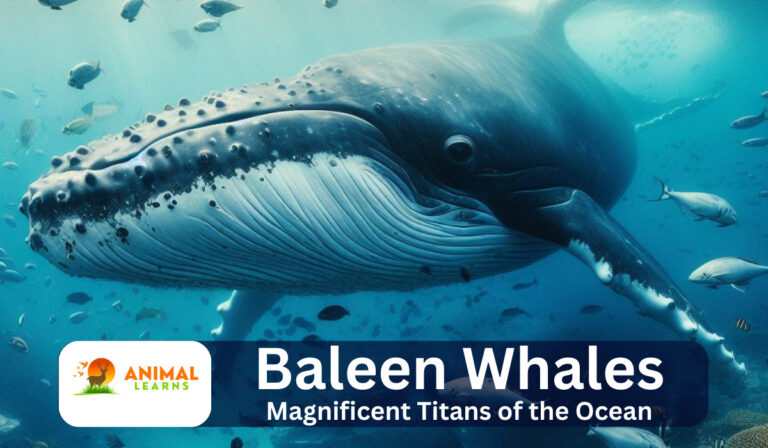Can Gorillas Swim? Gorillas’ Best Swimming Skills
Can gorillas swim? No, gorillas cannot swim. Their bodies are too heavy and muscular to float or move in water. They also have short arms and legs that are not suitable for swimming strokes. Gorillas are happy on land, where they find water in their food and bond with their mates.
Can gorillas swim is a common question. They may dip their toes in shallow water, but they never swim in deep water. Swimming is one of the differences between humans and gorillas, even though we are closely related.
Gorillas are amazing animals that come in different shapes and sizes. Each type of gorilla has its own special features and lives in a different place.
They are very important for their ecosystems, as they help to spread seeds, create habitats, and balance the food chain. But they also face many threats, such as hunting, habitat loss, and diseases.
Gorillas: A Fascinating Species
Contents
Gorillas, the largest of the great apes, have captivated the world with their complex behaviors and social structures. These magnificent creatures are divided into various subgroups, with silverback gorillas being a specific and iconic subgroup known for their striking silver-colored backs.
Gorillas are predominantly terrestrial, yet their swimming abilities and behaviors remain a subject of intrigue. Observing gorillas in their natural habitat offers unique insights into their swimming skills, or lack thereof, shedding light on their adaptation to the environment.
7 Reasons Why Gorillas Do Not Swim?
| Reason | Explanation |
| 1. Physiological Limitations | Gorillas are very heavy and muscular, so they sink in water. They have a hard time keeping their heads above water. |
| 2. Lack of Swimming Adaptations | Aquatic animals have special features like webbed feet or sleek bodies that help them swim fast and smooth. Gorillas don’t have these features, so swimming is not their strong suit. |
| 3. Short Limbs and Heavy Bones | Swimming requires long limbs and light bones to move well in water. Gorillas have short limbs and heavy bones, so they are not good swimmers. They struggle to do swimming strokes or glide through water. |
| 4. Fear of Water | Gorillas don’t like water, especially deep water like rivers or lakes. They stay away from water, so they don’t swim. |
| 5. Waterless Hydration | Gorillas get most of their water from their food, so they don’t need to drink much water to live. |
| 6. Waterless Social Grooming | Gorillas don’t swim, but they groom each other to be friends. They use dry ways to keep their groups happy. |
| 7. Lack of Swimming Skills | Gorillas don’t know how to swim when they are born. They are made for living in the rainforest, not in water. |
Do gorillas have a fear of water?
Gorillas are generally not known for their swimming abilities, and there is a common belief that they may have a fear of water; however, the question “Can gorillas swim?” sparks curiosity about their aquatic behaviors.
Water is not a common element in the lives of gorillas, the powerful and majestic creatures of the African rainforests.
They usually keep a safe distance from deep waters like rivers and lakes, as they know their heavy and muscular bodies are not made for swimming or floating. But that doesn’t mean they are scared of water altogether.
They often drink from shallow streams or ponds, and sometimes even wade in them for fun. Especially when they are young, gorillas like to play with water and explore its properties. They might use sticks to measure how deep it is or splash around with their friends in the sun.
Gorillas are not water-phobic, but they are careful and smart about how they interact with it. They are perfectly adapted for their terrestrial lifestyle in the rich and diverse jungle habitats.
Swimming Endeavors: Teaching Gorillas to Swim
“Exploring the fascinating question ‘Can gorillas swim?’, researchers are undertaking swimming endeavors to teach these incredible primates this unique skill, shedding light on the aquatic abilities of our close relatives.”
Teaching gorillas to swim is an uncommon but intriguing activity that has been explored in certain settings. Gorilla swim clubs have emerged as organizations focused on imparting swimming skills to these great apes.
Understanding gorilla swimming ability, buoyancy, and swimming speed is a delicate process that requires patience and expertise.
While mountain gorillas, a specific type of gorilla, may encounter water bodies in their habitats, learning to swim is not a typical behavior.
However, some captive gorillas have been introduced to water environments to facilitate their learning process.
Types of Gorillas
Gorillas are the kings of the great apes, but they are not all the same. There are two main kinds of gorillas: the Eastern Gorilla and the Western Gorilla.
Each of these kinds has its own subspecies, which are different in how they look and where they live. But have you ever wondered, ‘Can gorillas swim?’ Let’s learn more about the main types of gorillas.
Eastern Gorilla (Gorilla Beringei)
The Eastern Gorilla is one of the two main species and is further divided into two subspecies
a. Mountain Gorilla (Gorilla beringei beringei)
- Mountain gorillas are amazing animals that live in the chilly, high-altitude areas of central Africa, such as the Virunga Mountains.
- They have a strong body and a thick fur, which keeps them warm in the cold.
- Mountain gorillas are very rare and precious, and they need our help to protect them from threats. That’s why many people are working hard to save them and their habitats.
b. Eastern Lowland Gorilla (Gorilla beringei graueri)
- Eastern lowland gorillas are another type of gorilla that lives in the eastern part of the Democratic Republic of Congo (DRC).
- They are not as big as mountain gorillas, but they are still very impressive. They have a dark coat and a stocky build. They love to eat fruits, leaves, and stems from the lowland forests and swamps.
- Eastern lowland gorillas are in danger of disappearing because of people destroying their homes and hunting them. We need to act fast to save these amazing animals and their environment.
Western Gorilla (Gorilla gorilla):
The Western Gorilla, the other main species, is divided into two subspecies
a. Western Lowland Gorilla (Gorilla gorilla gorilla)
- Western lowland gorillas are the most common and widespread type of gorilla. They live in the thick rainforests of Central and West Africa.
- They have a slim body and short hair, unlike their eastern relatives.
- They are very social and intelligent animals, and they communicate with each other using sounds, gestures, and facial expressions. Western lowland gorillas are also very good at finding food in the forest, such as fruits, nuts, and insects.
b. Cross River Gorilla (Gorilla Diehli)
- Cross River gorillas are a very special and rare type of gorilla. They live in a small area between Nigeria and Cameroon.
- They have a different look than other gorillas, with a small head and a long face. They are very shy and secretive, and they avoid people as much as possible. Cross River gorillas are in great danger of going extinct, as there are only about 300 of them left in the wild.
- The Cross River Gorilla (Gorilla diehli), one of the world’s rarest primates, faces conservation challenges in its habitat; however, an intriguing aspect of their behavior is the question: Can gorillas swim?
Physiological Adaptations in Gorillas
Gorillas, known for their remarkable physiological adaptations to terrestrial life, raise the intriguing question: Can gorillas swim, showcasing the curiosity surrounding these powerful and intelligent primates.
Gorillas are amazing animals that have adapted to their forest homes in Africa. They have many special features that help them survive and thrive in their environment. Let’s take a look at some of them.
Muscular Build
Gorillas are very strong and muscular. They need this strength to move through the thick plants and trees of the rainforest. They also use it to climb, walk on their knuckles, and protect themselves and their families.
Skeletal Structure
Gorillas have different skeletons than humans. Their arms are longer than their legs, which makes it easier for them to walk on four legs and climb trees.
Dental Adaptations:
Gorillas have big, powerful jaws and teeth. They can chew and crush the hard, leafy plants that they eat. Their teeth have a thick layer of enamel that protects them from wear and tear.
Digestive System
Gorillas have a special digestive system that helps them get the most out of their food. They have a large pouch in their gut, called the cecum, where bacteria break down the plant fibers and release nutrients.
Respiratory System
Gorillas have a good respiratory system that supports their large body and active lifestyle. Their lungs and blood can carry enough oxygen to keep them going.
Dermatoglyphics
These types of animals have unique fingerprints and footprints, just like humans. These patterns on their skin, called dermatoglyphics, may help them grip and feel things better.
Fur and Skin Color
Gorillas usually have dark fur, which helps them stay warm in their forest habitats. The dark fur absorbs the sun’s heat, especially in the cooler, higher areas where they live.
Sagittal Crest
Male gorillas grow a ridge of bone on top of their heads, called the sagittal crest. This ridge gives more space for their jaw muscles to attach, making them even stronger.
Behavioral Traits of Gorillas
Gorillas are amazing creatures that have many fascinating behaviors. They use these behaviors to survive, communicate, and adapt to their rainforest homes. One question often asked about gorillas is, ‘Can gorillas swim?’ Let’s explore this intriguing aspect of their behavior.
Social Structure
- They are social animals that live in groups called troops or bands. Each troop has a leader, called a silverback, who is the oldest and strongest male. He protects and guides the other members of his troop.
- Gorillas care about each other and have strong bonds within their group. They groom and touch each other to reinforce their relationships.
Communication
- Gorillas have many ways to talk to each other, such as making sounds, moving their hands, and showing their faces. The most famous sound they make is the chest-beating display, which can mean “Stay away” or “I’m the boss”. Other sounds they make are grunts, hoots, and barks, which tell how they feel and what they want.
- How do gorillas communicate in their groups? They use sounds, gestures, and body language to express themselves. The most famous sound they make is the chest-beating display, which can serve as a warning or a show of dominance. Other sounds they make are grunts, hoots, and barks, which convey information about their emotions and intentions.
Foraging Behavior
- Gorillas mostly eat plants, and they spend a lot of time looking for food. They have special stomachs that help them digest the tough plant parts, such as leaves, stems, and shoots. Gorillas’ food choices depend on what is available, and they may travel far to find good vegetation.
- They are mainly plant-eaters, and they forage for vegetation for a large part of their day. They have clever stomachs that help them break down the fibrous plant material, such as leaves, stems, and shoots. Gorillas’ feeding behavior changes with the availability of food, and they may move long distances to find suitable vegetation.
Territorial Behavior
- Gorillas have their own space in the forest, and they don’t like strangers. The silverback, the leader of the group, protects his territory from other males and dangers. He makes loud noises and shows off his strength to scare away intruders.
- They have home ranges that they defend from rivals and threats. The silverback, the leader of the group, is in charge of guarding his territory from other males and dangers. He uses vocalizations and displays to warn intruders to stay away.
The question “Can gorillas swim?” Gorillas, primarily terrestrial creatures, are not natural swimmers, and their large, muscular bodies are not adapted to aquatic environments.
However, some instances suggest that gorillas may venture into water for short distances, wading through rivers or ponds.
Despite lacking a natural affinity for swimming, the exploration of whether gorillas can swim sheds light on the diverse behaviors and adaptations within the primate kingdom, showcasing the adaptability of these incredible animals in various environments.
Conclusion
“In conclusion, while gorillas are generally not considered proficient swimmers, the question ‘Can gorillas swim?’ invites exploration into the fascinating diversity within this species and their unexpected aquatic capabilities.”
Gorillas are amazing animals that live on land and climb trees. They don’t swim much, and they don’t like water. Why is that? It’s because of their body shape, their habits, and their home. Gorillas have big, strong muscles long arms, and short legs. These help them move and climb on land, but not in water.
In exploring the diverse capabilities of gorillas, a fascinating aspect often asked is, ‘Can gorillas swim?’ Interestingly, while gorillas are not known as natural swimmers, some individuals have been observed to navigate through water, shedding light on the multifaceted nature of these incredible primates.
They are too heavy and not flexible enough to swim well. Gorillas also prefer to stay in the thick forests of Central and West Africa, where they find food and shelter. They don’t need to swim to survive or explore their habitat.
FAQs
Can gorillas swim naturally?
No, gorillas are not natural swimmers, and swimming is not a common behavior among them.
Are there any instances of gorillas swimming in the wild?
Some wild gorillas can cross water when they have to, but it’s very rare. They don’t swim, but they wade through streams or rivers.
Can gorillas be taught to swim in captivity?
Some gorillas in captivity may play with water, but they don’t swim well. Their bodies and fear of water make swimming hard for them.
Do gorillas have any specific adaptations for swimming?
Animals that live in water have webbed fingers or toes to help them swim. Gorillas don’t have these, so swimming is not easy for them.
Why do gorillas generally avoid water?
Gorillas are scared of drowning and love to stay on land. They spend their time looking for food and exploring the rainforest, not swimming.












